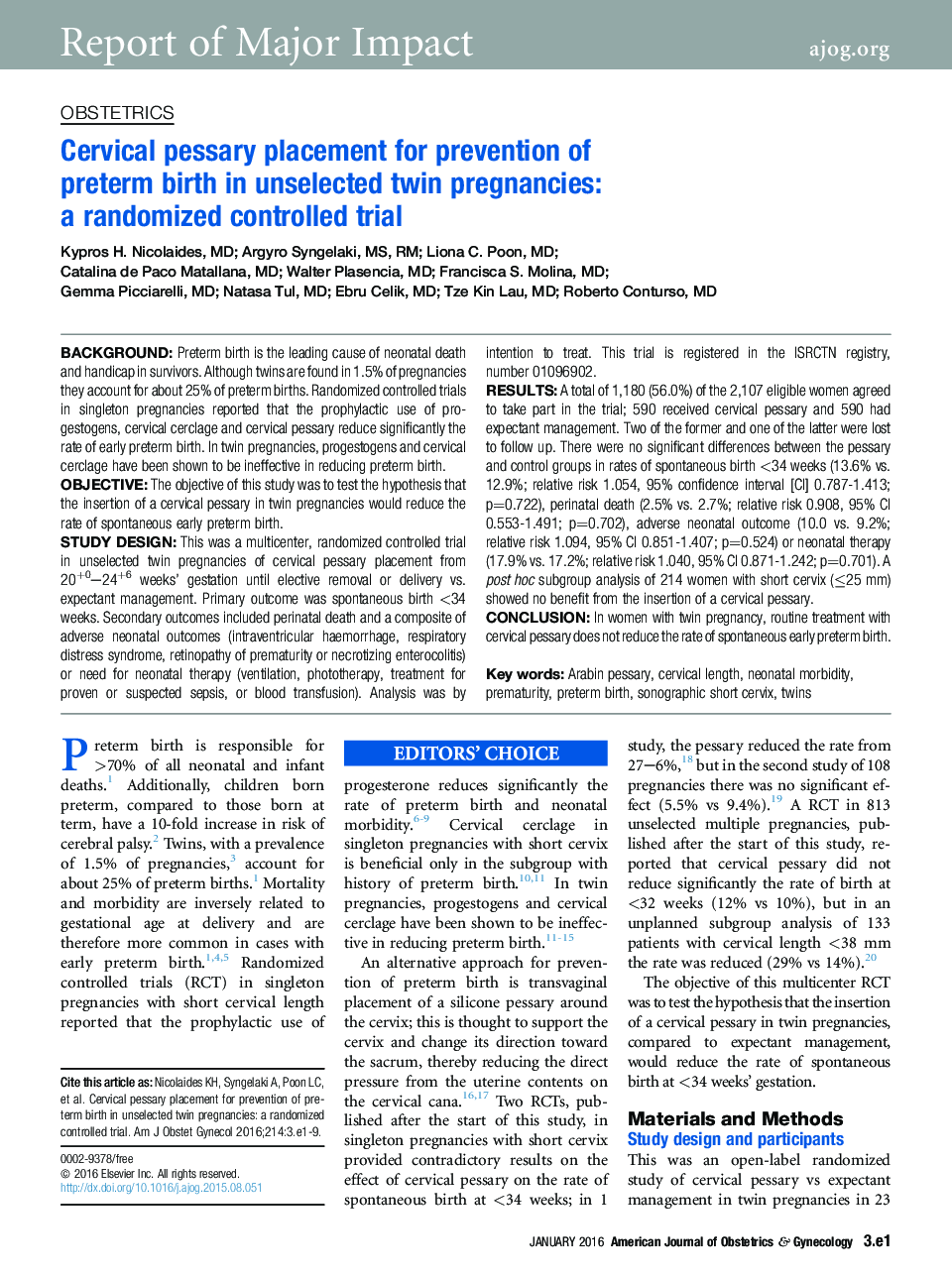| Article ID | Journal | Published Year | Pages | File Type |
|---|---|---|---|---|
| 3432296 | American Journal of Obstetrics and Gynecology | 2016 | 7 Pages |
BackgroundPreterm birth is the leading cause of neonatal death and handicap in survivors. Although twins are found in 1.5% of pregnancies they account for about 25% of preterm births. Randomized controlled trials in singleton pregnancies reported that the prophylactic use of progestogens, cervical cerclage and cervical pessary reduce significantly the rate of early preterm birth. In twin pregnancies, progestogens and cervical cerclage have been shown to be ineffective in reducing preterm birth.ObjectiveThe objective of this study was to test the hypothesis that the insertion of a cervical pessary in twin pregnancies would reduce the rate of spontaneous early preterm birth.Study DesignThis was a multicenter, randomized controlled trial in unselected twin pregnancies of cervical pessary placement from 20+0–24+6 weeks’ gestation until elective removal or delivery vs. expectant management. Primary outcome was spontaneous birth <34 weeks. Secondary outcomes included perinatal death and a composite of adverse neonatal outcomes (intraventricular haemorrhage, respiratory distress syndrome, retinopathy of prematurity or necrotizing enterocolitis) or need for neonatal therapy (ventilation, phototherapy, treatment for proven or suspected sepsis, or blood transfusion). Analysis was by intention to treat. This trial is registered in the ISRCTN registry, number 01096902.ResultsA total of 1,180 (56.0%) of the 2,107 eligible women agreed to take part in the trial; 590 received cervical pessary and 590 had expectant management. Two of the former and one of the latter were lost to follow up. There were no significant differences between the pessary and control groups in rates of spontaneous birth <34 weeks (13.6% vs. 12.9%; relative risk 1.054, 95% confidence interval [CI] 0.787-1.413; p=0.722), perinatal death (2.5% vs. 2.7%; relative risk 0.908, 95% CI 0.553-1.491; p=0.702), adverse neonatal outcome (10.0 vs. 9.2%; relative risk 1.094, 95% CI 0.851-1.407; p=0.524) or neonatal therapy (17.9% vs. 17.2%; relative risk 1.040, 95% CI 0.871-1.242; p=0.701). A post hoc subgroup analysis of 214 women with short cervix (≤25 mm) showed no benefit from the insertion of a cervical pessary.ConclusionIn women with twin pregnancy, routine treatment with cervical pessary does not reduce the rate of spontaneous early preterm birth.
